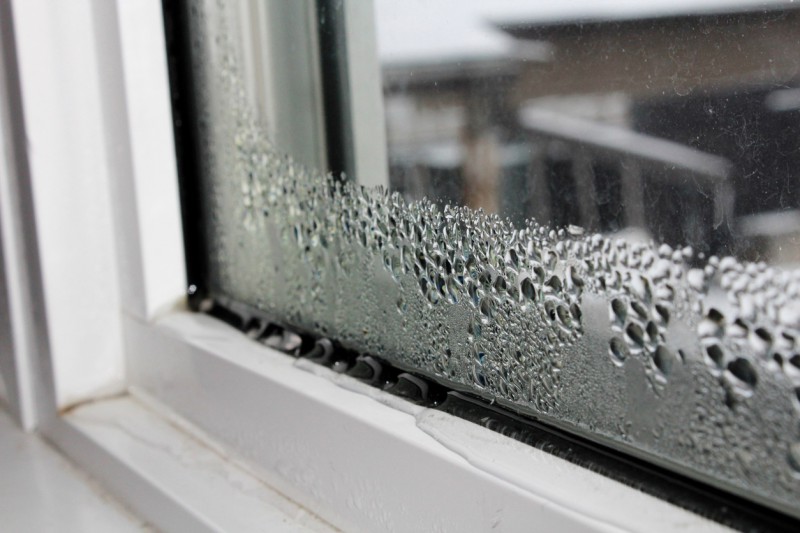
Building materials don’t like water. Often, by the time we see water damage, it’s too late and we have structural damage. You can get ahead of mold and mildew by regularly checking these areas to ensure you don’t have a moisture problem. This is especially helpful when buying a home—these sources of moisture may stay hidden for years and the home owner may not even realize they are there.
Windows and Doors
Even if windows were correctly installed, small cracks and gaps can form over time. Rain water will seep in between the sash and the jamb and dampen framing members. Rain water can also find its way in under painted window sills. To check for rot here, press a screwdriver into the wood where the sill meets the window. If the sill is rotten, the screwdriver will sink in. When water makes its way into the walls, it can cause rot and structural damage to framing.
The exterior door threshold is another place where moisture can collect. Every time it rains, the wood gets wet and moisture collects under the metal threshold. Check for rot regularly and replace the wood before water seeps in under the door.
Exterior Openings
These are a little trickier to inspect, so focus on areas where siding panels meet, at the corners of the house, around windows and other openings. Where these gaps and joins aren’t properly sealed, water can seep in and rot the underlying sheathing panels.
All roof openings are vulnerable to leaks. From skylights to chimneys, exhaust fans and vents, flashing should be properly installed. Ice dams can also push up through the shingles in the winter creating leaks. Roof leaks may not be immediately obvious and moisture can cause damage long before it comes through your ceiling. Inspect your roof annually to ensure you have no leaks.
After Flooding
Whether you have had a leak or flood, always check behind the drywall for moisture. As a rule of thumb, replace the lower half of drywall that has gotten wet in order to ensure moisture is properly cleared.
Plumbing
Of course plumbing involves water and openings that are the most common places for leaks. Regularly check beneath the dishwasher, next to the shower and tub (check pipes in the walls here), under toilets, especially if the toilet is a little wobbly which could indicate that the subfloor under the toilet is rotting.
Sinks are another area that should be regularly inspected. Use a flashlight to check that your plumbing isn’t leaking and causing mild and mildew.
Check the caulk around your tub regularly to ensure there are no cracks and that it isn’t yellowing or pulling away from the wall.
Appliances
Condensed water collects in a shallow pan inside your HVAC unit. A small pipe directs excess water in the pan to your floor drain. It’s quite common for these pipes to become clogged and water can drip down onto the floor.
Your washing machine is another likely place for mold and mildew. Check the seal on the cold and hot hoses regularly.
Window air conditioners direct condensed water outside through a tube. This tube can become clogged and cause water to seep back into the house. Check the wall under these units and clean pipes regularly.
